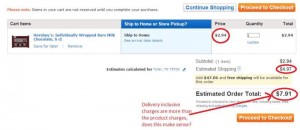Ever play the board game Risk? There was a period in my teens where my friends and I played non-stop. I remember it being a daunting game to pick up because not only could it last for hours (sometimes days) at a time, it required setting the groundwork early, having good foresight, and balancing a controlled expansion.
That’s what starting an email program from scratch reminds me of. When just starting off a business or planting the seeds of your marketing program, much of the same strategies apply. Winning the email game requires building out a sustainable growth strategy that is in tune with your customers’ needs and continues to provide just one step ahead of what is demanded. One of the key ingredients of this growth is being global-minded from the start.
Here’s why it’s a worthwhile investment to dedicate valuable time and resources towards building a global email marketing program from day one.
Each country uses the inbox differently
Our recent global marketing survey showed that the mean number of email subscribers in the U.S. (530K) is greater than that of France and Germany (491K and 467K respectively). The U.S. also sends more marketing than transactional email, which is the reverse for Germany. These two findings are just a glimpse at how differently the U.S. consumer interacts with email from their European counterparts.
While it may slow you down from initial execution, conducting research about who your customers are (more specifically which countries they’re based in) and how they engage, will help you direct your focus going forward.
First, you should collect your customers’ location during some point in the sign-up funnel. Depending on your business and how comfortable customers are in giving information, this can either be the full mailing address or just city and country.
Once you have this data, you can optimize the relevance of your content, tailoring it to fit local holidays, time zones and language. Also, don’t forget to combine this with your findings of general local trends. Since we now know that the US inbox receives more marketing email than the German one does.
Laws vary in every country
Being global-minded has implications greater than just customer engagement – each country handles privacy, opt-in and spam slightly differently – being unfamiliar with these laws can put you at risk of legal consequences. Even if your business is based in say, the U.S., you are responsible for abiding by the laws of the countries that your recipients reside in.
Perhaps still fresh in your mind is Canada’s new Anti-Spam law (CASL) that came into effect in the summer of 2014. To adapt to the changing digital landscape, the Canadian government rewrote the terms of consent and liability. One of the biggest changes was that senders now needed to collect explicit permission from the recipient before they are allowed to email, much like that of the U.S. CAN-SPAM laws.
“Privacy and opt-in email laws continue to become more stringent, a trend that will only continue as illustrated by Canada’s recent anti-spam legislation (CASL),” said Poole in a recent CMS Wire interview.
There are plenty of resources online (one of our favorites is Cornell’s Legal Information Institute) to read up on global privacy and anti-spam policies, but as your business grows, you will want to think about recruiting the help of counsel.
A list that keeps on giving
Last but not least, building these geographically segmented lists of customers earlier, allows you to easily pull more insights as your business grows. Whether you’re opening a brick-and-mortar store in another city or looking to drive brand awareness overseas, you will already have built a relationship with your audience in these respective areas and target them when taking your business to the next level.
The earlier you establish communication with your customers, the stronger your feedback loop will be. Each open, click or share gives insight into what customers respond most to and which parts of your product most excites them. Segmented lists continue to help you help your customers.
To learn more about how to segment your contact lists, hop over to our video tutorial here.
–
While your email marketing program will take much longer than a game of Risk to properly develop and expand, having a well-built start will make you a strong contender in the inbox game. Over the next few weeks, we will be exploring global trends from the past year – from spam, to frequency and testing methods and how to use this to stay ahead of the curve in 2015.
(266)
Report Post





